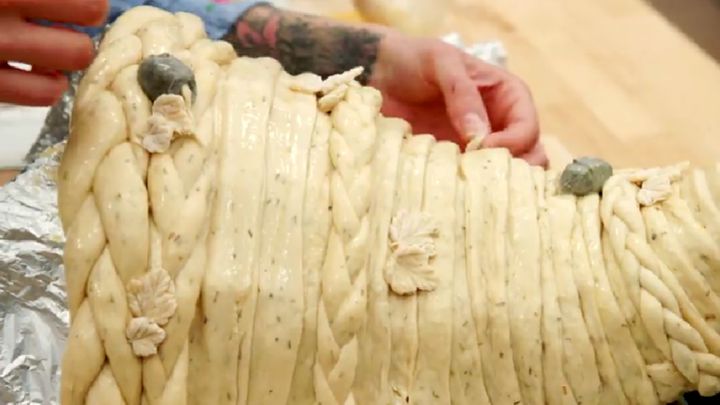
After last week’s falls, frights, and quittings, you’d think the Great British Bake-Off had had its fill of Kaos.
But it turns out this week’s showstoppers, mouth-watering cornucopia, have a history that’d fit right into the Greek mythology-based Netflix hit.
Also known as a “horn of plenty,” cornucopias symbolise abundance.
They date back to Ancient Greece and originally consisted of a goat’s horn filled with fruits and grain ― and were supposedly once used to conceal a very important guest.
What’s the myth behind cornucopias?
According to Dictionary.com, a Roman retelling of the Greek legends from Ovid says that Hercules wrestled the horn from a river god called Achelous. Nymphs then turned it into a horn of plenty, always brimming with food.
One of those nymphs, Amalthaea, fed her foster child Zeus (Jeff Goldblum to fans of the Netflix show) food from the cornucopia in some Greek myths while he was hiding from his father, Brittanica’s online encyclopedia shared.
A Greek legend goes on to say that Zeus went on to place the horn of plenty along with the rest of the goat among the stars, the encyclopedia adds.
The motif stuck around, becoming part of Ancient Roman myths and even appearing in a 1630 Rubens painting of the goddess Abuntia who was associated with the horn.
Its image is so enduring that we recognise it today, featuring it in movies like The Hunger Games and, apparently, attempting to recreate it in flour on the telly.
And we put it in our Fruit Of The Loom T-shirts! Right?
Some people think they remember seeing the produce-filled horn on the cartoon fruit-bearing label of Fruit Of The Loom T-shirts when they were younger.
I’m one of them, but according to the company, we’re wrong ― the company shared on X that “The Mandela Effect is real, the cornucopia in our logo is not.”
Sounds like something a regretful Zeus would make the brand say after an overzealous Earhtly marketing campaign, but okay...
You can watch The Great British Bake-Off every Tuesday at 8 pm on Channel 4.
